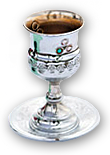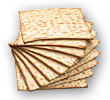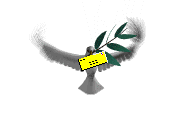

Jewish Passover Seder FAQ
The Traditional Jewish Seder Table and Passover Meal
Frequently Asked Questions (and Answers!)
The Jewish Seder retells the ancient story of Israel’s redemption from bondage in Egypt. This guide answers Frequently Asked Questions about the Passover Seder to help you put together an appropriate table setting and traditional meal for your family’s next Seder ceremony.
1. What is a 'Seder'?
A Jewish Seder is a religious ceremony which celebrates the liberation of the Hebrews from servitude in Egypt. The word “seder” means “order” in Hebrew, referring to the 15 parts of the Seder ritual which are observed in a specific sequence during the ceremony and centers around the Passover Seder meal.
2. What time of day is the Seder observed?
Like all Jewish holidays, they start and finish at sunset — nobody had clocks 5000 years ago so they used the sun as the start and end of a holiday.
3. Who prepares the Seder meal?
Generally the family who is hosting the Seder prepares the Seder meal. This can be a very intensive process. The most observant use a completely separate set of cookware, utensils and dishes (Kosher for Passover) for preparation and serving the Passover Seder meal.
4. What items are on the Seder Table?
- Three Matzohs
- The Seder Plate
- Roasted Shankbone
- Roasted Egg
- Bitter Herbs
- Charoses
- Parsley, Lettuce or Watercress
- A wine goblet for each participant
- Wine, or grape juice
- A large goblet filled with wine at the center of the table (“Cup of Elijah”)
- A pillow or cushion placed on the left arm of the chair used by the Leader, or close to it
- Dishes of Salt Water
- Extra Bitter Herbs and Charoses
5. Are special table settings required for the Seder?

Passover is a joyous occasion! It celebrates the liberation of the Jewish people and as such is a time for giving thanks. Make your Seder table festive and beautiful! It is considered to be a very family oriented and an uplifting occasion. Be sure to include a wine glass for all participants, the Seder plate with its ceremonial foods and the special wine goblet for Elijah.
6. Who is in charge of the Seder ceremony?
Anyone can be the leader or host for the evening. The leader is usually chosen by the host family. A good Seder leader should have the ability to encourage participation from everyone at the Seder and allow each participant to share the spotlight.
7. Are special foods required for the Seder?

The correct observance of the holiday requires eating only unleavened bread (Matzo) during the week-long Passover holiday, which includes the Seder. Other foods traditionally found at the Seder table are a roasted shank bone; a roasted egg; bitter herbs; charoses; parsley, lettuce or watercress; and wine or grape juice.
8. Are the Seder foods religiously significant?
All the traditional items on the Seder table are symbolic and are included to represent specific parts of the story of the Jewish people’s exodus from Egypt.
- Matzos: Three Matzos are required for the Seder. Matzo is unleavened bread, typically hard and cracker-like. The Jews left Egypt in such a rush they did not have time to wait for their bread dough to rise. Thus considered a ‘poor man’s bread’ it is also a reminder of Jewish life under slavery. We use three Matzos to represent the three religious groupings of the Jewish people — Kohen, Levi and Yisroayl. They are placed together to indicate the unity of the Jewish people.
- Roasted Shankbone: The Roasted Shankbone represents the Paschal Lamb, which was sacrificed on the altar of the great Temple in Jerusalem, on Passover.
- Roasted Egg: The Roasted Egg represents a second offering, known as the “Festival Offering,” for it was brought to each of the three Festivals — Pesach, Shavuos and Succos.
- Bitter Herbs: Also known as “Moror”, Bitter Herbs represent the bitterness of slavery which our ancestors were compelled to endure.
- Charoses: Charoses is a paste made of fruits and nuts which represents the mortar with which our forefathers made bricks for the building of Egyptian cities.
- Parsley, Lettuce or Watercress: Also known as “Karpas”, this green vegetable represents the fruit of the earth, the arrival of Spring and the gathering of the Spring harvest. In partaking of the Karpas, the vegetable is dipped into the dish of salt water before being consumed. In tasting the salt water, we are asked to remember the tears our ancestors shed while suffering the tortures of slavery.
9. Who sits at each place at the Seder table?
Family members and friends or invited guests sit at the Seder table. As the Seder is a family oriented ceremony, it is helpful to have families sit together to enable parents to support their children’s participation, if a large number of guests have been invited. With large groups it is also helpful to have the leader (or leaders) all sit at the ‘leaders table’ (the head table) to better maintain order in the multi-step Passover ceremony.
10. How many people can take part in the Seder?
Any number of participants may take part in a Seder. Often I get orders for hundreds of books where a condo or country club is putting on a Seder — people like it this way because they don’t have to go through the work of preparation and cost.
11. Do I have to be Jewish to participate in the Seder?
No, anybody can be invited to a Seder; in fact, inviting friends and casual acquaintances is fulfilling the passage in the Haggadah which suggests the Passover Seder should be shared with others — “let all who are hungry come and eat”.
12. Do I need to memorize the Seder text?
No, that is the purpose of the Haggadah — to retell the story about the redemption of the Jewish people from their bondage of slavery in Egypt. It is common to have a copy of the Haggadah at each place setting so each guest may participate fully in the Seder ceremony.
13. What if I can't read Hebrew?
This is one of the most loved features of the “Haggadah for the American Family”. If you look in the English section you will find transliterated Hebrew, thus permitting you to read English but be speaking authentic Hebrew words.
14. What are the Four Questions, and why are they important?
- “Why is this night of Passover different from all other nights of the year?”
(Question #1) On all other nights, we eat either Chomaytz or Matzoh, but on this night we eat only Matzoh.
(Question #2) On all other nights, we eat all kinds of herbs, but on this night we eat only Moror.
(Question #3) On all other nights, we do not dip even once, but on this night we dip twice.
(Question #4) On all other nights, we eat either sitting or reclining, but on this night we eat reclining.”
The leader and the assembled guests then answer each of these Four Questions as designated in the Haggadah.
15. Where can I purchase Haggadah books for the Passover Seder?
Visit our SECURE ONLINE ORDER FORM to purchase copies of “Haggadah for the American Family”, with transliterated Hebrew with English instructions. This Haggadah book is perfect for family use — it’s easy to read and supports all skill levels, whether this is your first Seder or your fiftieth.
Haggadah for the American Family simplifies Seder preparation
“Haggadah for the American Family” contains the complete Passover service in English and in traditional Hebrew, with transliterated phonetic English pronunciation. Traditional celebration songs and complete step-by-step directions are included in an easy-to-read format which supports those who are comfortable with Hebrew and participants who are new to the Passover Seder. Visit our SECURE ONLINE ORDER page to order copies of “Haggadah for the American Family” for your next Seder celebration.
"Chag Sameach"
Haggadah for the American Family
Genuine - Original - "The One You Grew Up With"
Presented by The Haggadah Institute · Jay E. Berkowitz · 20525 SW 82nd Court · Cutler Bay, FL 33189 · (305) 525-9759

